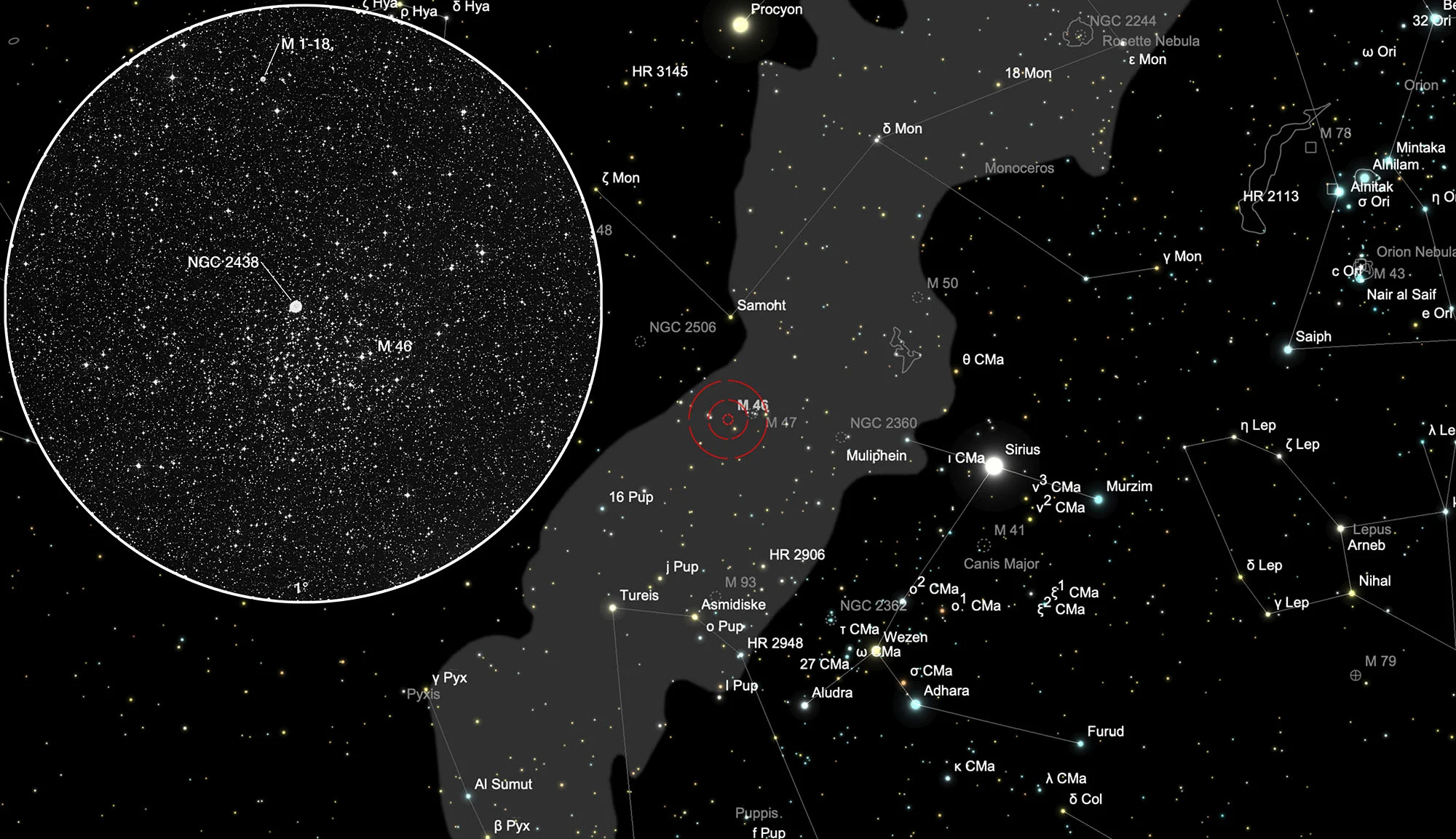Cluster M 46 with Planetary Nebula NGC 2438
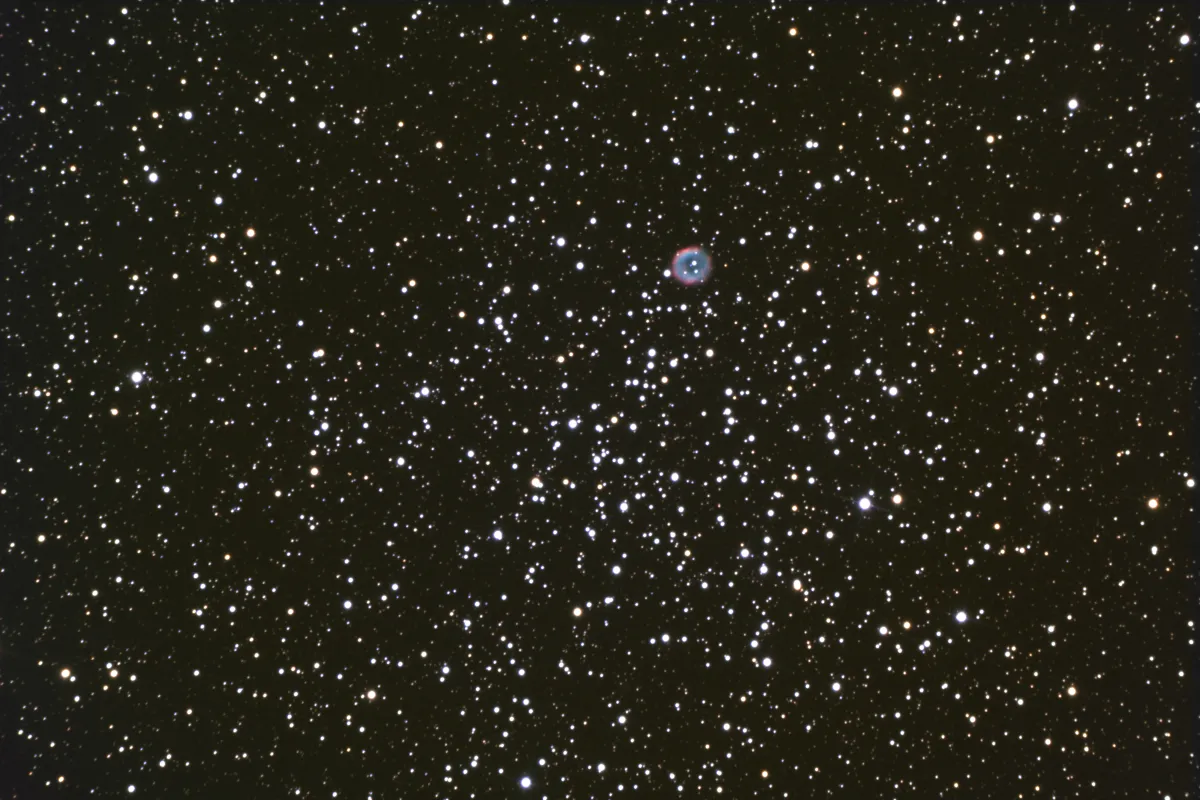
Open Cluster M 46
Messier 46 is a rich open star cluster in a beautiful location in the Milky Way ribbon on the stern of the ship Argo Navis (Puppis). Charles Messer discovered this star cluster in 1771. However, he was only able to partially dissolve the cluster and believed that the group of stars contained a little nebula. An indication that the optical performance of its telescopes was not exactly outstanding from today's point of view.
At least 150 stars (Burnham) between 10th and 13th magnitude have been recognized as group members, but there are probably around 500. The brightest stars in the cluster are blue giants near the spectral class A0, each with about 100 times the solar luminosity. The distances of the cluster vary from 3200 to 6000 light years. The total integrated brightness of the cluster is about 6.6 mag and the apparent extent 25 to 30 arc minutes.
| Designation | NGC 2437 |
| Type | OCL (III2m) |
| Right Ascension (J2000.0) | 07h 41m 46.8s |
| Declination (J2000.0) | -14° 48' 36" |
| Diameter | 20 arcmin |
| Visual magnitude | 6.1 mag |
| Metric Distance | 1.375 kpc |
| Dreyer Description | !, Cl, vB, vRi, vL, inv planetary |
| Identification, Remarks | h 463; GC 1564; M 46; OCL 601 |
Planetary Nebula NGC 2438
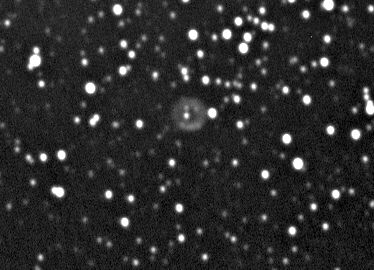
A special jewel in the open star cluster M 46 is the planetary nebula NGC 2438, which appears to the observer within the cluster, about 7 arc minutes from the centre. The PN was discovered by Sir William Herschel on 19 March 1786. He listed it as IV 39 with the notes: «Pretty bright, round, resolvable, within the 46th of the Conoissance des Temps almost of an equal light throughout 2' diameter. No connection with the cluster, which is free from nebulosity.» [464]
A membership of the PN in the star cluster is excluded, since the two have different radial velocities. The distance of the PN is given as 3300 light years, which gives a true diameter of 70'000 AU or a little more than one light year. It appears that the PN is in front of the actual cluster, but the distance between the two objects is not known accurately enough to be definite. The central star appears visually about 17.5 mag bright, but is relatively easy to photograph because of its strong radiation in the blue and UV range. The calculated surface temperature is around 75'000 Kelvin.
| Designations | PN G231.8+04.1: NGC 2438, PK 231+04.2, ARO 46, Sa 2- 13, VV 43, VV' 69 |
| Right Ascension (J2000.0) | 07h 41m 50s |
| Declination (J2000.0) | -14° 44' 08" |
| Dimensions | 64." (optical), 80." (radio) |
| Distance | 2.0 kpc |
| Radial Velocity | +74.0 ± 4.0 km/s |
| Expansion Velocity | 22.4 (O-III) 20.0 (N-II) km/s |
| C-Star Designations | AG82 87 |
| C-Star Magnitude | B: 17.7 |
| Discoverer | HERSCHEL 1827 |
Planetary Nebula Minkovski 1-18
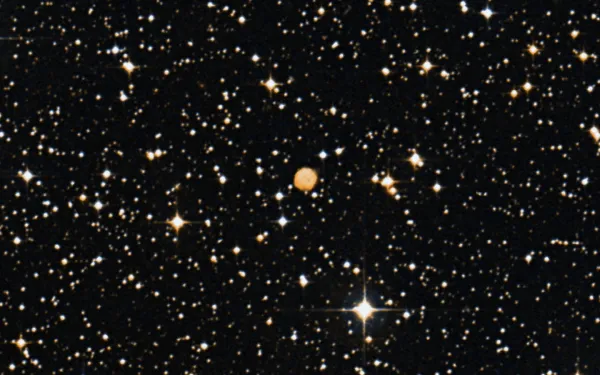
The faint planetary nebula Minkovski 1-18 (M 1-18, PK 231+4.1) lies even further north of M 46. It was discovered in 1946 by the German-American astronomer Rudolph Minkowski. He detected objects with little or no continuous H-α spectrum on objective-prism survey plates obtained by W. C. Miller using the 10-inch telescope at Mount Wilson. Further examination of its appearance on direct photographs, taken at the Newtonian focus of the 60-inch or 100-inch telescope on Mount Wilson, revealed its nature as a planetary nebula. [397] With an integrated brightness of 15.0 mag and an apparent diameter of 32 arc seconds, the PN is much more inconspicuous than NGC 2438. The distance is 4433 pc (14'460 light years) and it moves away with 18 km/s. [145]
| Designations | PN G231.4+04.3: M 1-18, PK 231+04.1, Sa 2- 15, VV 44, VV' 70 |
| Right Ascension (J2000.0) | 07h 42m 03s |
| Declination (J2000.0) | -14° 21' 12" |
| Dimensions | 30." (optical) |
| Radial Velocity | +18.0 ± 25.0 km/s |
| Expansion Velocity | 13. (O-III) km/s |
| C-Star Designations | AG82 89 |
| C-Star Magnitude | B: 20.9 |
| Discoverer | MINKOWSKI 1946 |
Finder Chart
To the east of the head of the Canis Maior about the same height as γ CMa and about five degrees south of α Monocerotis lies the bright, open star cluster M 47, which is easily visible to the naked eye on clear nights. About one degree to the east of this is M 46, which differs from M 47 in that it has considerably more, but finer stars. At the northern edge of M 46 lies the planetary nebula NGC 2438. For the precise identification of M1-18 one uses the excerpt from the STScI Digitized Sky Survey.
Visual Observation
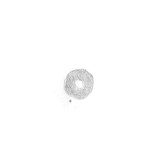
200 mm aperture: Although the planetary nebula NGC 2438 is quite faint, it is immediately noticeable in the eyepiece. However, the property remains more or less structureless. A dilution of the gas is very faintly visible in the centre. The central star with 17.5 mag is not visually recognizable. The use of the OIII filter did not bring any significant improvement. The nebula stands out more strongly from the surroundings, but structures hardly emerge. The contrasts in the upper drawing are exaggerated compared to the view in the telescope. Surrounding stars are not shown above for reasons of time and the sheer number. — 1995, Bruno Bleiker
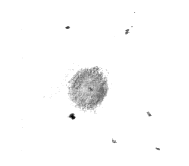
200 mm aperture: The first thing you notice is the round, slightly oval shape of this small ring nebula. The wide ring is evenly bright and easily recognizable without a nebula filter. Inside the ring, the nebula is a little weaker. The visual impression is accurately recorded in the Vorontsov-Velyaminov system as a PN with a ring structure and a regular disc (IV + II). Around the centre of the nebula, with direct vision, one recognizes a stellar brightening that could be assumed to be the central star. The object's brightness was clearly weaker than the nearby star in the south-south-east. The central star of NGC 2438 has a brightness of 17.5 mag, which is beyond the visual possibilities of an 8-inch telescope. It is one of the innumerable stars of the open star cluster M46. — 1997, Philipp Reza Heck
320 mm aperture: The planetary nebula NGC 2438 is clearly visible with and without an O-III filter. Without a filter, the view of the beautiful little ring is much more impressive among all the sparkling stars of the open star cluster. With the O-III filter, the stars are weakened too much. — 5. 2. 2022, Ibergeregg, Stefans 320 mm f/5 Dobsonian, Bernd Nies
